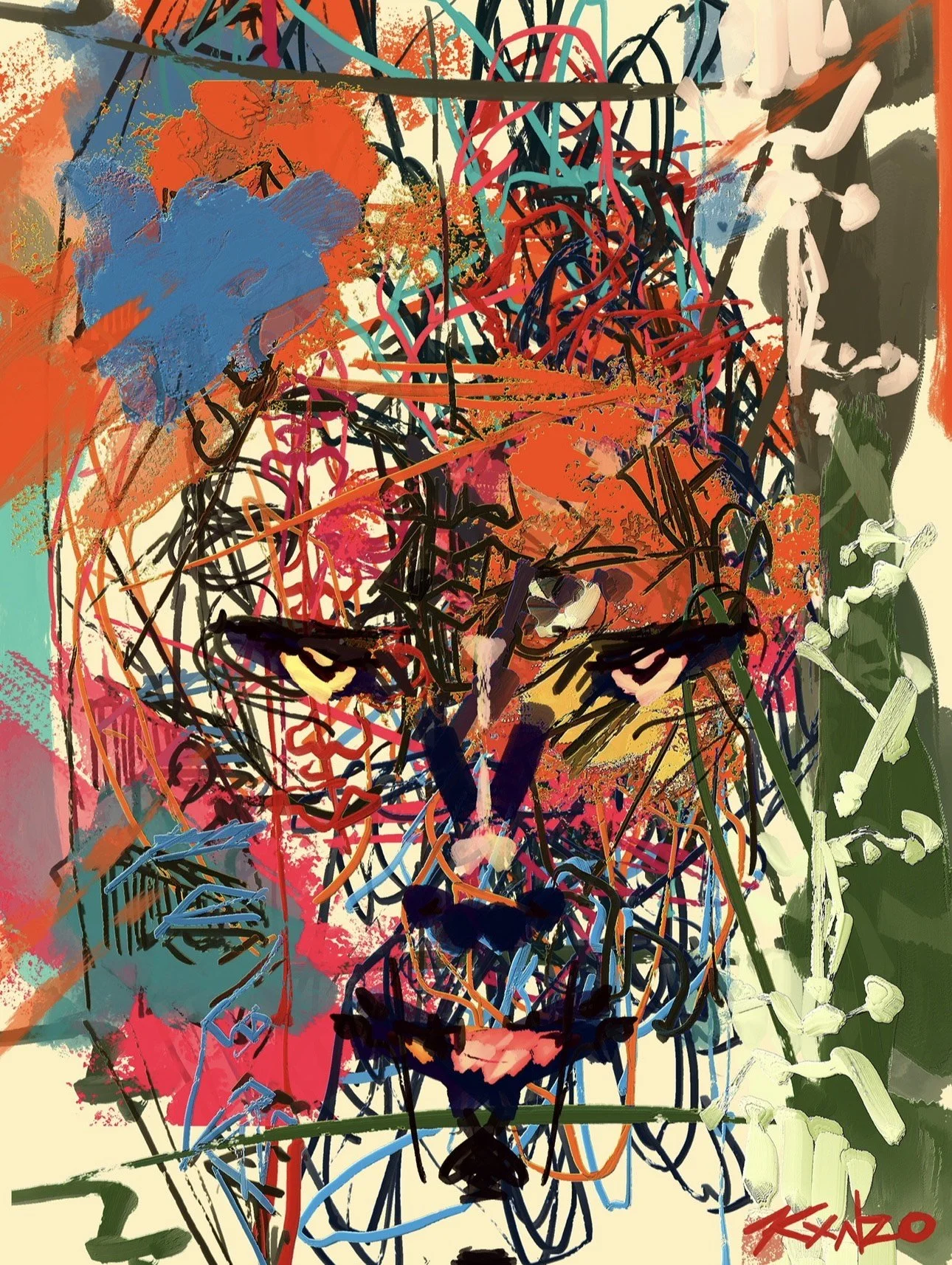“Diversity became the new currency — but what did we lose in the exchange?”
“For these multiculturalists, differences are absolute, irreducible, intractable—occasions not for understanding but for separations.” - The Cult of Multiculturalism by F. Seigel, 1991
When I first tried to put a name to my art, I remember writing this little paragraph for a gallery submission.
I said: “The ecstatic color and all-over, exuberant patterning recall the textural canvases of Pacita Abad, while geometric structures reference the sharp, abstract emotionality of Ang Kiukok. This color and energy is balanced by a disciplined counterpoint—a personal connection to Irezumi tattoo art which provides the graphic strength and rigorous line-work that grounds the painting's explosive compositions. The final synthesis acts as a visual metaphor for the Gen Z experience. The dense, fragmented imagery and layered forms mirror the relentless, non-linear flow of the information age. By blending Manila color, New York graffiti, and Japanese line-work, the work validates the emotional urgency of the current era, asserting that profound self-expression is found only in the messy, unfiltered, and hybridized act of painting.”
At the time, I thought I was articulating a multicultural Filipino American identity — positioning myself in dialogue with a global lineage of artists. But when I reread it, I started wondering: was I doing this to distinguish myself from everyone else, or was I genuinely searching for a universal truth through all these cultural fragments?
Because lately, I’ve been thinking about how art — and honestly, culture in general — has started to use “diversity” as currency. Every gallery, every statement, every bio seems to champion multiculturalism, but few actually question it. What are we celebrating, really? The connection between cultures — or just the difference itself?
You know what’s crazy? Multiculturalism started as this beautiful idea — that we should celebrate different cultures, different stories, different ways of being human. It was about connection. About realizing that the world isn’t flat, it’s layered — and every culture adds color to the whole painting.
But somewhere along the way, it got twisted. We stopped sharing culture and started hoarding it. Now difference isn’t something that unites us — it’s something we use to draw borders. People say, “You’ll never understand my experience,” and suddenly conversation turns into confrontation.
We used to chase something called truth — something universal. Not “my truth,” not “your truth” — just truth. The kind of thing that made philosophy, science, and art possible in the first place. But now, we’ve decided that truth itself is cultural. That what’s real depends on who’s saying it.
And I get it — identity is powerful. But when everything becomes identity, where do we meet each other? If every idea is just a reflection of where you come from, then who’s allowed to be right? Who’s allowed to learn?
See, the problem isn’t diversity. It’s when diversity stops being a bridge and starts being a wall. When education turns into identity defense. When we stop exploring together and start protecting our little islands of perspective.
The goal was never to erase difference. It was to see through it — to recognize that there’s something human beneath every language, every ritual, every struggle. Something we all share.
And that’s what I’m trying to hold onto — as an artist, as a Filipino American, as someone who exists between worlds. I want to honor where I come from, but not get trapped there. I want to find truth that doesn’t belong to any one culture — the kind that reminds us we’re all still learning how to be whole together.
